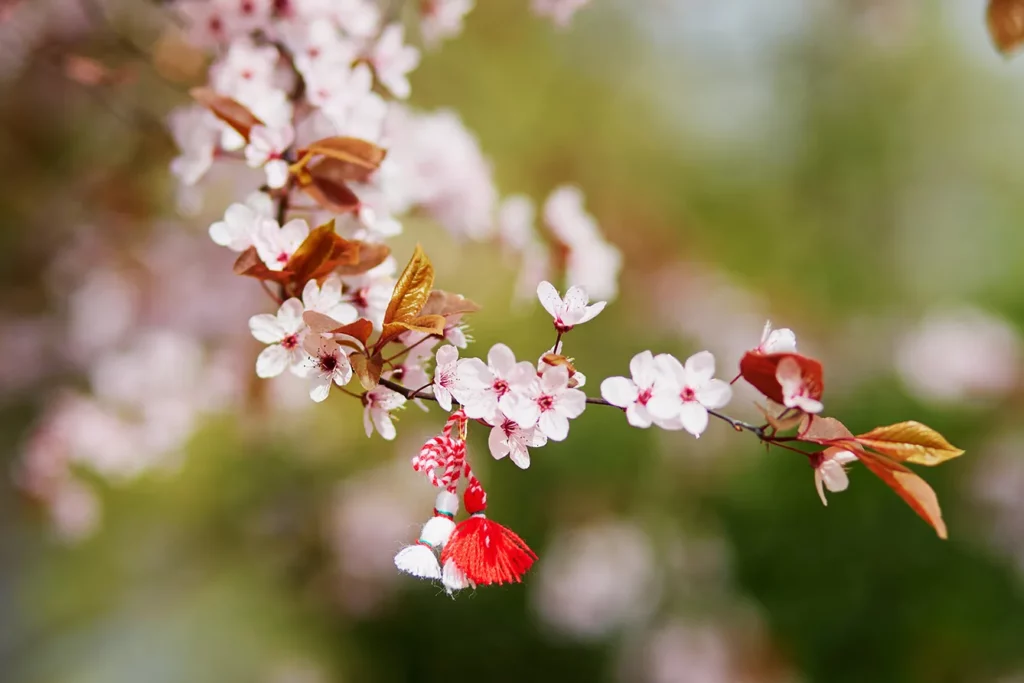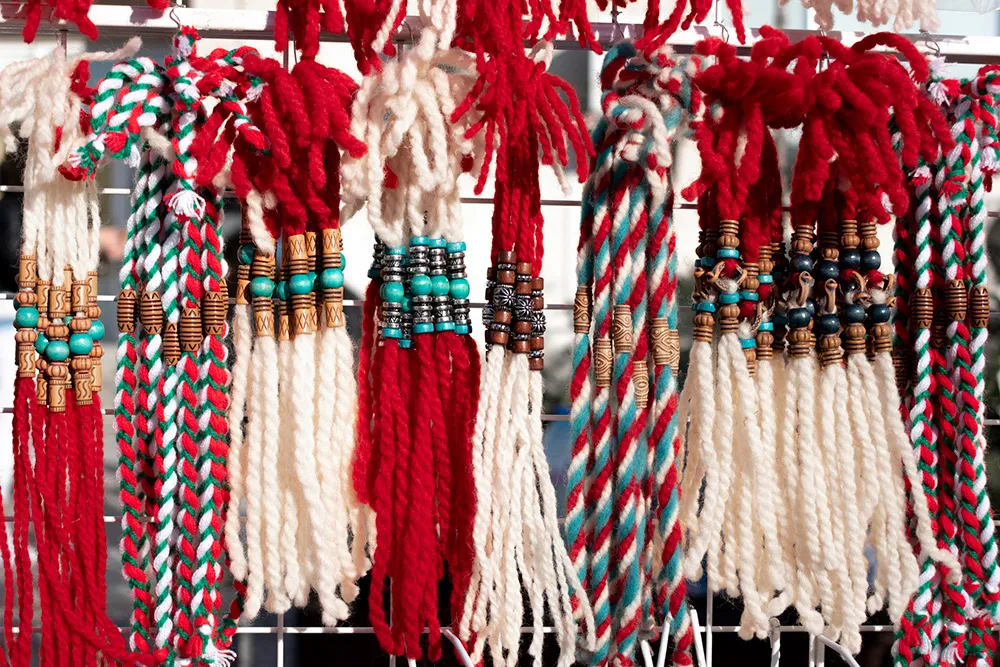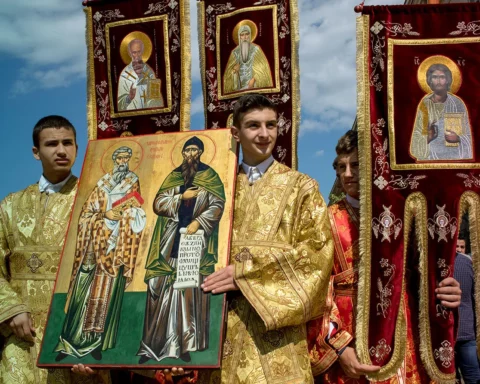The red and white ornaments are exchanged between relatives and friends with a message for better days and success throughout the year. They also serve as a blessing for a long healthy life. And just in case, as a protection against evil forces. “The martenitsas are a purely Bulgarian symbol,” says Margarita Milanova, an ethnographer at the History Museum in Silistra, in conversation with 3Seas Europe.
Baba Marta, the weather teller
The first day of March is inextricably linked to the mythical heroine of Bulgarian folklore, Baba Marta, or Grandma March. According to folk legends, she is an elderly woman. Regardless of her age, however, she represents new beginnings, expressed by the return of spring. Baba Marta is also the personification of the month of March, also known as “Women’s Month.” She is perceived as a symbol of conception, the reawakening of land, and fertility.
In ancient times, Bulgarians believed that when Baba Marta laughed, the weather would be warm. If she is in a bad mood, the sign would come in the form of strong winds and clouds. With everyone craving sunny weather after the long winter, a major part of the customs in March serves one purpose only: appeasing Baba Marta.


For starters, it was believed that the old woman would only enter an orderly house. This is why people would clean their homes thoroughly. Sounds familiar? That’s right; spring cleaning was a thing before Marie Kondo. Back in the day, it was also common to hang a red tablecloth in the yard as a way to ensure preferential treatment for the house and its inhabitants by Baba Marta.
Martenitsa, the Bulgarian amulet
And, of course, there’s the martenitsa, a guaranteed way to get on Baba Marta’s good side. The red and white colors of the martenitsa come with their own meaning. White symbolizes purity, innocence, and new beginnings, while red represents life, conception, the energy of the sun, and fertility. In some regions of Bulgaria, different colors are allowed; for example, blue, which protects against the evil eye, is often used instead of white in the Sofia area. Sometimes other symbols may be added, such as a snail shell, a clove of garlic to ward off dark forces, or a coin for prosperity.
Questions still abound about the origin of the martenitsa. According to one theory, this amulet originates from the time when the Thracians lived in these lands and attached red threads to domestic animals to protect them from diseases.
Another legend refers to Khan Asparuh, the 7th-century founder of Bulgaria. His beautiful sister Huba once sent him a message in the form of a white thread tied to the leg of a falcon, the legend goes. However, the bird hurt itself, and the thread turned red. This episode made the Khan order his people to adorn themselves with white and red threads, just like the wounded falcon.
The fashionable tradition
“In fact, March 1 is a pagan holiday celebrated not only in Bulgaria but in all territories where Bulgarians live, such as Romania, Moldova, and North Macedonia. This tradition is still present there,” adds Margarita Milanova of the History Museum in Silistra in northeastern Bulgaria. “One can spot martenitsas even all the way in Ukraine, Serbia, and Greece. In Romania, the practice of exchanging martenitsa is also known. It was something adopted from the Bulgarian population living there.”
In the past, Bulgarians hung their white and red amulets on all parts of the body, including the neck and legs. The martenitsa was also associated with a person’s social status. Young unmarried women would wear the martenitsa on the left side of their clothes, while young men put them on their left hand’s pinky. For married men, it was obligatory to wear the martenitsa in their right sock.
Today, one is free to wear their spring bracelet as they like it. But whatever you do, don’t toss the martenitsa away once warmer temperatures have arrived. The rule is clear: Once you see a blossoming tree, you should tie your amulet to one of its branches.
Happy spring!







